
 The ambrotype process is a photographic process that creates a positive photographic image on a sheet of glass using the wet plate collodion process. It was invented by Frederick Scott Archer in the early 1850s, then patented in 1854 by James Ambrose Cutting of Boston, in the United States.
The ambrotype process is a photographic process that creates a positive photographic image on a sheet of glass using the wet plate collodion process. It was invented by Frederick Scott Archer in the early 1850s, then patented in 1854 by James Ambrose Cutting of Boston, in the United States.
This time, it’s your turn…
My good Katie Cooke (who I’ve featured on Photocritic before, and who might be familiar to you as the author of Slowlight – a fantastic resource on pinhole photography) wrote up a 20-step guide on the mysterious world of ambrotype photography.
Arguably, it’s not a very useful skill to learn (as opposed to, say, learning black and white, and subsequently colour developing in a darkroom), but we’re all photography geeks for a reason, dammit, so let’s start the new year by geeking out like it’s 1859!
 Let’s start off with a bit of a disclaimer – The old photography processes aren’t as straight forward as clicking a button: The worst damage you can do to yourself with a digital camera is knocking yourself in the head (yeah, James, I’m looking at you) or falling off a cliff. Working with wetplates means you’re handling a lot of chemicals and suchlike – you need to understand which of the chemicals are dangerous, and which ones are less so.
Let’s start off with a bit of a disclaimer – The old photography processes aren’t as straight forward as clicking a button: The worst damage you can do to yourself with a digital camera is knocking yourself in the head (yeah, James, I’m looking at you) or falling off a cliff. Working with wetplates means you’re handling a lot of chemicals and suchlike – you need to understand which of the chemicals are dangerous, and which ones are less so.
I’d really recommend a workshop or tutorial for getting started: it’s a very physical process, and one that is much easier to learn by seeing and doing rather than reading. Watching a master in the art show you how it’s meant to be done will give you a massive head start. If that’s not possible, order John Coffer’s Doer’s guide (a text and 4 DVDs is available by post)
20 steps to Ambrotype victory…
Or: How not to make ambrotypes
1. Wash your glass pane
Take a piece of glass that’s cut to size to fit your plate holder, and wash it with washing up liquid and very hot water. Dry it and polish it. Breath on it, realise it’s still streaky, and polish it some more with your glasses cloth. Breath on it some more. Argh! Still streaky.
Juggle the glass to get a better look, cut your finger on the sharp edge because no, you couldn’t be bothered to knock the edges down could you. Bleed on the glass, and go back to washing it again. Wipe at it a bit more, and then declare it clean enough. Remember this would have been easier and less prone to fingermarks if you’d been wearing your stylish bright blue nitrile gloves.
2. Prepare the plate with egg. Yes, egg.
Sub the edges of the glass, by dipping a cotton bud into a mixture of egg white and distilled water that’s been sitting in the fridge for a while, and running that around the edges of the glass. This helps the collodion stick to the glass, particularly if it’s less than perfectly clean, and prevents it lifting up and peeling away your picture when you wash it later.
Do not leave the bowl of albumen mix where the cats will get at it and eat it. Egg white is Very Bad for moggies. Also, cat hair is not good for albumen.
3. Let the plate dry
Let the plate dry, and the eggy bits harden, while you set up the shot.
4. Set up your shot.
It’s easier if it doesn’t involve people at this stage, as there’s a lot of hanging around to do between now and the shutter opening. Create the scene for a bee-you-tiff-full picture, with large format camera on the tripod, all locked down and, no, you really aren’t going to bump the tripod just after you get the perfect focus, are you?
5. Look at the light and frown.
You’re inside, because you can’t leave the camera set up all alone on the front steps, your only bit of outside space, and, frankly, it’s pretty bloody dark in here, even by the big window. It’s december, get over it. Reach for your light meter, and then frown some more. That’s no damn use to you.
All you have learned about how to read light and work out the EV? Useless. You’re dealing with UV light now, not regular old school light. Collodion is not sensitive to red light, only blue. Look at your set up again, all those lovely red things in there? They will go black. The blue things? They might go white. Hard to tell, some do, some don’t. You’re probably going to get the first exposure very wrong, but that’s ok. You can do it again.
6. Add some silver
 Go and get the glass plate, with dried eggy bits, from the kitchen, wiping off the half-pound of dust that’s fallen on it since, and take it the bathroom, your magic and marvellous darkroom. This, in true Blue Peter fashion, has been prepared earlier: the floor is covered in black bin bags, which are covered with newspaper, and the bath is lined with the same.
Go and get the glass plate, with dried eggy bits, from the kitchen, wiping off the half-pound of dust that’s fallen on it since, and take it the bathroom, your magic and marvellous darkroom. This, in true Blue Peter fashion, has been prepared earlier: the floor is covered in black bin bags, which are covered with newspaper, and the bath is lined with the same.
On the board across the bath is a mysterious, mostly vertical black box, containing a 9% solution of silver nitrate that has been excited (yes, really, excited. It’s already had plates dipped in it, so has some other salts in there, iodine and cadmium ones, to be precise), a stack of paper towels, and various other bottles. You’ve already filtered this, with coffee filters, and funnels, while crouching on the bathroom floor and trying not to catch the funnel full of silver with your sleeve and send it flying across the room, so, it’s ready to use.
7. Gloves!
Get the damn gloves on or you’ll have black-splotched fingers for the next week.
8. Dust your glass again.
You’re almost ready to pour the collodion. This is the sticky film which will make the silver hold to the plate, and turn a reject from a cheap frame into a photograph. Before you open it, warn your significant other that if he wants a cigarette, he’d better go outside, as you don’t want anything to explode. You’re being paranoid, but paranoid is better than explodey. Two bottles: one to pour, and one to drain. Put a funnel in the drain bottle.
9. Add the collodion to your plate
Balance the clean glass, ok, the dusty glass, as the bathroom fan seems to generate dust but damn it, you are now beyond caring about this and you’ll probably never make a plate without dust on it (and at least the bright, dragged dust spots have a charming name in this process: comets)…oh, sorry, yes, balance the clean glass on the fingertips of your non-dominant hand, as though it was a waiter’s tray.
Pour a puddle of collodion onto middle of the glass, and gently, no, gently, tilt it so the collodion runs to the corner but not over the edge, and then around to the next corner and not over the edge. Oh, well, that’s why you put the newspaper down in the bath. Aren’t you glad you were wearing gloves? And so on around to the final corner, never letting the collodion run back on itself. Head for the bottle-with the funnel, and tip the plate right up, final corner down, to run off the excess, shaking the plate side to side madly while not dropping it, face down and sticky, onto paper towels and newspapers. Knock the last drop off, and hold that plate vertically–no, don’t touch the front–while you cap the bottles and wait for the collodion to skin over slightly. Press your ungloved thumb into the corner, and check it takes a finger print. This should only take about 30 seconds from starting to pour. You were getting a move on, no?
10. Start your timer…
Open the mysterious black box of silver, put the plate on the perspex dipper, sticky-side out, and slide it smoothly into the depths, and get the lid back on pronto. Start the timer. You brought the timer into the bathroom, right? Run around the house yelling about where the hell you left the timer. Discover it clipped to your pocket. Start the four minute count, for the silver to coat the plate.
11. Set up the developing while the plate is sucking in silver.
Measure out some developer liquid and pour it into a small shot glass, and add a tiny splosh of distilled water to slow it down just a touch so you don’t get into a panic about the short amount of time you have to develop things. Mix some fixer.
Yes, the hardcore wetplaters use potassium cyanide, but, I’ll stick to regular modern fixer, thanks. Find some space on the shelf above the loo to hold the tray of fixer. Get a jug of water ready, and an empty tray. Put these on the loo. It’s the only space you have left.
12. Breathe deeply – Ahh, fixer and ether and alcohol fumes all mixed in to the tiny bathroom space.
13. Check the timer.
 Four minutes is almost here. Find the dorky torch. (The LED headlamp thingy, with a red filter on, that makes everyone looks dorky, but works a treat as a darkroom light.) Close the bathroom door and put a towel along the gap. Marvel at how bright it is with the dorky torch. Realise you’ve left the light on. Open door, turn off light, turn off hall light, close door, apply towel.
Four minutes is almost here. Find the dorky torch. (The LED headlamp thingy, with a red filter on, that makes everyone looks dorky, but works a treat as a darkroom light.) Close the bathroom door and put a towel along the gap. Marvel at how bright it is with the dorky torch. Realise you’ve left the light on. Open door, turn off light, turn off hall light, close door, apply towel.
When the four minutes is done, open up the silver box and lift out the plate on the dipper. It should be a creamy yellow, and the clear silver nitrate solution should be running off it rather than beading up. Remove the plate without knocking the front against the dipper, the box, your fingers or anything–it’s very fragile at the moment, and will tear if you look at it harshly. Hold it over the box and let some of the silver drip back in. Stand it up on some paper towels, to take the wet edge off the bottom, and wipe the back carefully. Any silver on the back will somehow magically get around to the front between now and developing, and create blotches and splotches (a.k.a. oysters.)
14. Load the plate up into the holder.
Try not to think about the uneven patches you can see, or the great globs of dust. Put in the dark slide, and, holding your plate vertical (you have been keeping the down edge down all this time, no?) waltz back to your camera. See now why this is trickier with portraits?
15. Make the exposure
Check your camera set up, do not kick the tripod. Make sure the shutter is closed. Go on, check again. Trust me on this. Set the timer for your best guess exposure because this is going to be way beyond shutter speed and probably into the minutes as the room is practically dark and you’re going to use artificial light to give it a boost. Plate holder into the camera, plate facing the front. Pull the slide. Cock the shutter.
Turn the light on (nasty face tanner with four UV bulbs, in my case) and hold it in the right spot, while not looking into the light at all. Reach around, without dropping the light, to get the shutter release and start the timer. Expose, all the while fretting that you are under or overcooking the exposure. Close the shutter, put the slide back in, remove the holder from the camera, and back to the bathroom with you.
16. Add developer
Dorky torch on, light off. Unload the plate and balance it on your finger tips again, waiter-style, only this time you want the long edge towards you, and tilt the plate just slightly away from you. Hover over the tray that’s on the loo seat, and take the shot glass of developer.
Take a deep breath. Pour the developer quickly but steadily onto the plate, running it along the close top edge, and letting it flow over the plate, but not off the edge, tilt it back up and shimmer-shake it gently so the liquid sits and moves around on the top. If you’ve missed any, it’s too late, if there are islands and holes and gaps in the developer, it’s too late, they are gone and you’ll never see them again.
Were you counting seconds? You should have been counting seconds. By the time you get to about seven seconds from the developer hitting the plate, you should have some image up, the highlights at least. And then the midtones come in quickly, oh hell, time to stop. Grab that jug of water and slosh it over the plate, fast, to stop the development. If your image flashed up immediately, it was over exposed. If it was sluggish and wouldn’t come up and you were there muttering and shaking your plate, it’s under exposed.
If you over develop it, all contrast will be lost, and it will be foggy and flat. But hey, you might be able to use it with an enlarger.
17. Fix it
Slide the developed plate into the tray of fixer, and slosh it gently back and forth. Wash the shot glass, wash the other tray, put the lights on. Slosh it till its clear, and this doesn’t take long, except for the stubborn bit at the edge which is looking decidedly blue, but that’s ok, keep going. You’re not using KCN, so the fixer won’t eat the image away. Lift it out and rinse it in the bathroom sink, so you don’t dribble fixer through the house as you take it into the kitchen to look at it.
18. Check it
 Put the glass into a black tray, with water above and below it, and look at it in good light. If you got it right (ahahahaha) then it will show up as a perfectly exposed positive, with the clear parts black and the highlights white, and a lovely range of warm silvery greys inbetween. An ambrotype is a very thin negative, that, on black, reverses out to positive (yes, it’s magic.) They are often framed sitting against black velvet, or you can enamel the back, so that it looks like a positive without being in a black tray of water. If it’s over-exposed, then the highlights and midtones are going to be dense and solid. You might be able to print it with modern silver gelatin paper, and treat it like a thin negative. But that’s a fuss for another day.
Put the glass into a black tray, with water above and below it, and look at it in good light. If you got it right (ahahahaha) then it will show up as a perfectly exposed positive, with the clear parts black and the highlights white, and a lovely range of warm silvery greys inbetween. An ambrotype is a very thin negative, that, on black, reverses out to positive (yes, it’s magic.) They are often framed sitting against black velvet, or you can enamel the back, so that it looks like a positive without being in a black tray of water. If it’s over-exposed, then the highlights and midtones are going to be dense and solid. You might be able to print it with modern silver gelatin paper, and treat it like a thin negative. But that’s a fuss for another day.
19. Rinse it
Leave it in that tray, with something underneath to prop it up just a touch to let the water flow underneath too, and keep the water running gently for about 20 minutes. They dry it. You can let it drip dry, or dry it with a hair dryer (or, for the hardcore, an open-flame spirit lamp.) Do not fret when it goes about two stops lighter, just admire the lovely shimmery silver. This is a good time to scan it, otherwise you are going to have to wait 24 hours.
20. Varnishing
When it’s bone dry, you can varnish it. Varnish smells glorious–it’s made of alcohol and gum sanderac and lavender oil–and is a complete pain in the arse. Get the plate hot with the hair dryer, and warm the bottle of varnish in a jog of hot water. You really want gloves for this, as this varnish is the stickiest substance on the planet. Juggle the hot plate, trying not to drop it, back to the bathroom, and, almost like you did with the collodion, pour it onto the image-side of the glass.
Hold it flat a moment, and let the varnish get drawn into the silver, and the alcohol evaporate off, then tip it straight up–no shaking this time–and drain it into the drain bottle for filtering later. Look, it’s gone back to the colour and tone it was when it was wet. Hurrah!
Wait a couple of minutes, and then back to the hair dryer until the varnish is dry to the touch. Then let it cure overnight. At which point you can use meths and cotton wool to get rid of the globs of varnish that got mysteriously all over the back of the the plate.
Put the image on a piece of black cloth. Voila. One ambrotype.
Further reading:
Wikipedia’s article on Collodion photography is a bit lacking, but can at least give some historical perspective.
Joe Smigiel’s “Getting Started In Wetplate Collodion Photography” is an excellent starter read if you want to find out how to do this properly.
John Coffer’s Doer’s guide (a text and 4 DVDs)
Quinn Jacobson’s book, “The Contemporary Wet Plate Collodion Experience” is no longer available, but he has a new one coming out in February 2009, along with a video-based workshop series online.
The wet plate collodion forum board that he runs is friendly, helpful, and packed full of knowledgeable people http://collodion.com/forum
And reading John Towler’s 1864 book, “The Silver Sunbeam“, is never a waste of time, particularly for trouble-shooting.
Also, Matthew Carey Lea’s 1871 book, “A manual of photography”
And here is a far from exhaustive list of some of the people who are doing amazing work with the process: Sally Mann, Kerik Kouklis, Quinn Jacobson, Jodi Sternbach, Luther Gerlach, Jody Ake, Matthew Larkin, Scully & Osterman, Ellen Susan, and interesting stuff pops up in the flickr wetplate pool (I really like Alexey Alexeev’s work there)
Just a reminder…
Just to re-iterate: This is not meant to be a practical guide to working with wet plate collodion. Before you do any work with wet plate collodion, you should make sure you understand the chemicals and their risks, as many are toxic, carcinogenic, highly flammable, or explosive. Do not handle these chemicals without understanding their risks, how to handle them, and how to dispose of them safely. Using any of them is at your own risk, and the author does not accept any liability or responsibility for your improper use of these chemicals or processes.
A huge thank you to Katie for writing up this guide!
Do you enjoy a smattering of random photography links? Well, squire, I welcome thee to join me on Twitter -
© Kamps Consulting Ltd. This article is licenced for use on Pixiq only. Please do not reproduce wholly or in part without a license. More info.

 The iPhone is many things. It’s the most flawed phone I’ve ever owned (which I wrote about here back when I was still editing T3.com), but it’s still heads and shoulders ahead of any other phone I’ve ever owned, too: It’s the first device that does everything I need to, the apps functionality is a stroke of genius, the built-in GPS and maps has saved my bacon so often I’ve lost count, and I’m a recovering Trism addict, too. It’s got the best screen on any phone I’ve ever used, and the whole touch-screen thing is fab.
The iPhone is many things. It’s the most flawed phone I’ve ever owned (which I wrote about here back when I was still editing T3.com), but it’s still heads and shoulders ahead of any other phone I’ve ever owned, too: It’s the first device that does everything I need to, the apps functionality is a stroke of genius, the built-in GPS and maps has saved my bacon so often I’ve lost count, and I’m a recovering Trism addict, too. It’s got the best screen on any phone I’ve ever used, and the whole touch-screen thing is fab.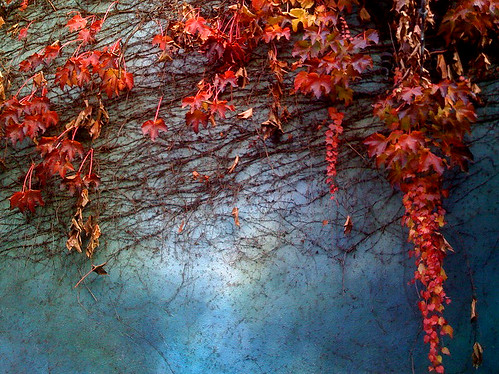































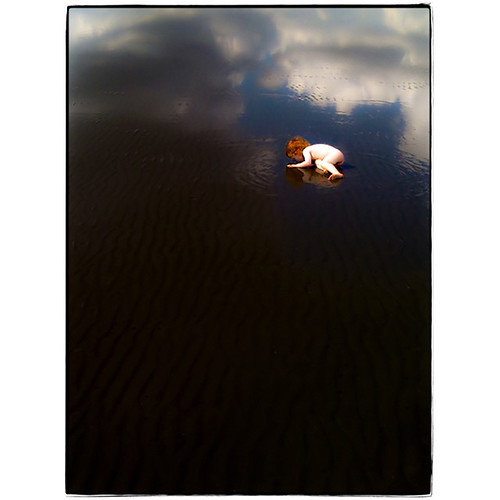























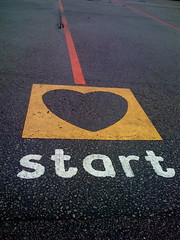





 It may be that you need permission to take photographs in some public places. In some cases, this can mean the difference between you owning the images or not (i.e. if you have climbed over a wall or trespassed, you may find yourself in court with no rights to your own photos)
It may be that you need permission to take photographs in some public places. In some cases, this can mean the difference between you owning the images or not (i.e. if you have climbed over a wall or trespassed, you may find yourself in court with no rights to your own photos)

 Urban landscapes become a completely new landscape at night. Everything changes. A city that is featureless and dull in sunlight can be an exciting, vibrant scene full of character that presents good opportunities to an urban photographer.
Urban landscapes become a completely new landscape at night. Everything changes. A city that is featureless and dull in sunlight can be an exciting, vibrant scene full of character that presents good opportunities to an urban photographer.





 The first thing you’re going to need is a camera body cap.
The first thing you’re going to need is a camera body cap. Now, to prepare the camera body cap, I used some coarse sanding paper to take the logo off, then some finer sanding paper to get the coarseness down a little. There’s no good reason for doing this, other than that it’s a little easier to work with a flat surface than one with the logo of your camera embossed on the front.
Now, to prepare the camera body cap, I used some coarse sanding paper to take the logo off, then some finer sanding paper to get the coarseness down a little. There’s no good reason for doing this, other than that it’s a little easier to work with a flat surface than one with the logo of your camera embossed on the front. Now, you’ll have to forgive me for the blurriness of this illustration image – it’s tricky to hold a drill and a camera cap and a camera to take the photo all at the same time.
Now, you’ll have to forgive me for the blurriness of this illustration image – it’s tricky to hold a drill and a camera cap and a camera to take the photo all at the same time. Anyway, you end up with a body cap with a hole in it. Finish the hole by sandpapering down the rough edges both on the front and the back of the body cap, and remember to sandpaper the inside a little bit too – if for no other reason than to get a prettier finish.
Anyway, you end up with a body cap with a hole in it. Finish the hole by sandpapering down the rough edges both on the front and the back of the body cap, and remember to sandpaper the inside a little bit too – if for no other reason than to get a prettier finish. Next up, we’re going to create the pinhole itself. There’s tons of way of doing this, but I’m a big fan on using whatever you have to hand. You need a material which is soft enough to work with efficiently, but it needs to be firm enough to be at least a little bit durable.
Next up, we’re going to create the pinhole itself. There’s tons of way of doing this, but I’m a big fan on using whatever you have to hand. You need a material which is soft enough to work with efficiently, but it needs to be firm enough to be at least a little bit durable. Drinks cans and tea light are made of soft aluminium, so you should be able to cut them with a pair of kitchen scissors without any problem. Beware that the edges may be very sharp, though, and you don’t want blood everywhere, so be careful.
Drinks cans and tea light are made of soft aluminium, so you should be able to cut them with a pair of kitchen scissors without any problem. Beware that the edges may be very sharp, though, and you don’t want blood everywhere, so be careful. With a very sharp implement (like a safety pin or similar), push gently into the aluminium. It helps if you have a soft-ish surface like a writing pad (that’s why all the photos are taken on lined paper. Well, that, and laziness). You want to push and turn the needle so you can only just barely see a hole.
With a very sharp implement (like a safety pin or similar), push gently into the aluminium. It helps if you have a soft-ish surface like a writing pad (that’s why all the photos are taken on lined paper. Well, that, and laziness). You want to push and turn the needle so you can only just barely see a hole. When you think you’ve had a pretty good stab (haha, see what I did there) at making your first pinhole, hold it up to the light. If you can see that it isn’t perfectly round, discard your piece of metal and try again. It should look roughly like it does in the photo. Of course, the size of the pinhole is very important as well, but for now, we just want to make images appear, so this is a pretty good start.
When you think you’ve had a pretty good stab (haha, see what I did there) at making your first pinhole, hold it up to the light. If you can see that it isn’t perfectly round, discard your piece of metal and try again. It should look roughly like it does in the photo. Of course, the size of the pinhole is very important as well, but for now, we just want to make images appear, so this is a pretty good start. Now, you’re going to want to mount the pinhole to the centre of your body cap. Measure the centre carefully (or just take a wild guess, it’s up to you, really. I’m firmly in the guessing camp on this one), and simply tape the strip to your body cap. Also, I wish to apologise for the blurriness of this photo – you’d have thought I was capable of taking a sharp macro photo by now, but I guess that’s not the case. I blame my camera, the light, and London Transport Police because obviously, it couldn’t possibly have anything to do with me just rushing things a little bit in my excitement.
Now, you’re going to want to mount the pinhole to the centre of your body cap. Measure the centre carefully (or just take a wild guess, it’s up to you, really. I’m firmly in the guessing camp on this one), and simply tape the strip to your body cap. Also, I wish to apologise for the blurriness of this photo – you’d have thought I was capable of taking a sharp macro photo by now, but I guess that’s not the case. I blame my camera, the light, and London Transport Police because obviously, it couldn’t possibly have anything to do with me just rushing things a little bit in my excitement. Next, use a sharpie (or whatever black permanent marker you might have handy at the time), and black out the front and back of the visual metal. I’m not sure if this is actually good for anything, but it makes me feel better thinking that I’ve at least tried to reduce the refractions on my aperture ever so slightly. That, and it makes the lens cap look more home-made, which is always a bonus.
Next, use a sharpie (or whatever black permanent marker you might have handy at the time), and black out the front and back of the visual metal. I’m not sure if this is actually good for anything, but it makes me feel better thinking that I’ve at least tried to reduce the refractions on my aperture ever so slightly. That, and it makes the lens cap look more home-made, which is always a bonus. After the previous step, you’ve actually finished everything you need to do to create a pinhole photograph! I decided to add an extra step, which is to add an additional white cover to the front of the pinhole body cap (because, obviously, if it’s a DIY project you have to add such adornments. And also, it’s a marvelous excuse for me to post a photograph of myself on my own blog), but that’s just me.
After the previous step, you’ve actually finished everything you need to do to create a pinhole photograph! I decided to add an extra step, which is to add an additional white cover to the front of the pinhole body cap (because, obviously, if it’s a DIY project you have to add such adornments. And also, it’s a marvelous excuse for me to post a photograph of myself on my own blog), but that’s just me. With all the equipment finally put together in a half-way meaningful fashion, I figured it was time to start shooting some photographs…
With all the equipment finally put together in a half-way meaningful fashion, I figured it was time to start shooting some photographs…




 Things I particularly enjoy about this design is that it is modular, and almost entirely Widgets-driven. That means that the 4 menu type things on the home page, the ‘featured articles’ on the homepage, the ‘Recent Flickr’ thingies in the right-hand menu bar on article pages (like the page you’re looking at now) etc can be added, removed, and moved about without touching any code.
Things I particularly enjoy about this design is that it is modular, and almost entirely Widgets-driven. That means that the 4 menu type things on the home page, the ‘featured articles’ on the homepage, the ‘Recent Flickr’ thingies in the right-hand menu bar on article pages (like the page you’re looking at now) etc can be added, removed, and moved about without touching any code.
 Let’s start off with a bit of a disclaimer – The old photography processes aren’t as straight forward as clicking a button: The worst damage you can do to yourself with a digital camera is knocking yourself in the head (yeah, James, I’m looking at you) or falling off a cliff. Working with wetplates means you’re handling a lot of chemicals and suchlike – you need to understand which of the chemicals are dangerous, and which ones are less so.
Let’s start off with a bit of a disclaimer – The old photography processes aren’t as straight forward as clicking a button: The worst damage you can do to yourself with a digital camera is knocking yourself in the head (yeah, James, I’m looking at you) or falling off a cliff. Working with wetplates means you’re handling a lot of chemicals and suchlike – you need to understand which of the chemicals are dangerous, and which ones are less so. Go and get the glass plate, with dried eggy bits, from the kitchen, wiping off the half-pound of dust that’s fallen on it since, and take it the bathroom, your magic and marvellous darkroom. This, in true Blue Peter fashion, has been prepared earlier: the floor is covered in black bin bags, which are covered with newspaper, and the bath is lined with the same.
Go and get the glass plate, with dried eggy bits, from the kitchen, wiping off the half-pound of dust that’s fallen on it since, and take it the bathroom, your magic and marvellous darkroom. This, in true Blue Peter fashion, has been prepared earlier: the floor is covered in black bin bags, which are covered with newspaper, and the bath is lined with the same. Four minutes is almost here. Find the dorky torch. (The LED headlamp thingy, with a red filter on, that makes everyone looks dorky, but works a treat as a darkroom light.) Close the bathroom door and put a towel along the gap. Marvel at how bright it is with the dorky torch. Realise you’ve left the light on. Open door, turn off light, turn off hall light, close door, apply towel.
Four minutes is almost here. Find the dorky torch. (The LED headlamp thingy, with a red filter on, that makes everyone looks dorky, but works a treat as a darkroom light.) Close the bathroom door and put a towel along the gap. Marvel at how bright it is with the dorky torch. Realise you’ve left the light on. Open door, turn off light, turn off hall light, close door, apply towel. Put the glass into a black tray, with water above and below it, and look at it in good light. If you got it right (ahahahaha) then it will show up as a perfectly exposed positive, with the clear parts black and the highlights white, and a lovely range of warm silvery greys inbetween. An ambrotype is a very thin negative, that, on black, reverses out to positive (yes, it’s magic.) They are often framed sitting against black velvet, or you can enamel the back, so that it looks like a positive without being in a black tray of water. If it’s over-exposed, then the highlights and midtones are going to be dense and solid. You might be able to print it with modern silver gelatin paper, and treat it like a thin negative. But that’s a fuss for another day.
Put the glass into a black tray, with water above and below it, and look at it in good light. If you got it right (ahahahaha) then it will show up as a perfectly exposed positive, with the clear parts black and the highlights white, and a lovely range of warm silvery greys inbetween. An ambrotype is a very thin negative, that, on black, reverses out to positive (yes, it’s magic.) They are often framed sitting against black velvet, or you can enamel the back, so that it looks like a positive without being in a black tray of water. If it’s over-exposed, then the highlights and midtones are going to be dense and solid. You might be able to print it with modern silver gelatin paper, and treat it like a thin negative. But that’s a fuss for another day.
 Well, I’ll be damned…
Well, I’ll be damned…




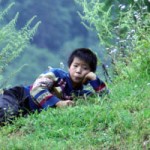
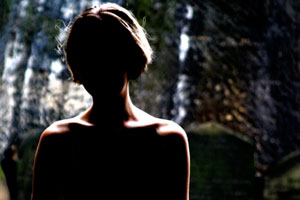 Many people do not wish to be photographed, for many different reasons. Native peoples, such as some Native Americans in the US, might refuse being photographed because they believe a mirror does not reflect reality, but a persons’ soul. A picture, taken by a device that relies heavily on mirrors, may therefore capture and enslave the soul. Sometimes, this restriction only counts for infants and children, as their souls are fragile, and can more easily leave the body.
Many people do not wish to be photographed, for many different reasons. Native peoples, such as some Native Americans in the US, might refuse being photographed because they believe a mirror does not reflect reality, but a persons’ soul. A picture, taken by a device that relies heavily on mirrors, may therefore capture and enslave the soul. Sometimes, this restriction only counts for infants and children, as their souls are fragile, and can more easily leave the body.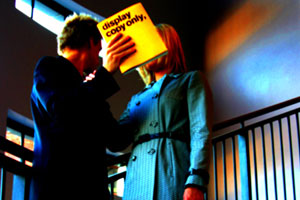 In some countries, such as China, taking someone’s picture without their consent is simply extremely rude. Others might feel they are not photogenic, and do not want their face to be splashed all over Flickr. And you need to be wary that some locations (places of worship, official buildings and structures, museums and military bases) may prohibit photography for security reasons.
In some countries, such as China, taking someone’s picture without their consent is simply extremely rude. Others might feel they are not photogenic, and do not want their face to be splashed all over Flickr. And you need to be wary that some locations (places of worship, official buildings and structures, museums and military bases) may prohibit photography for security reasons.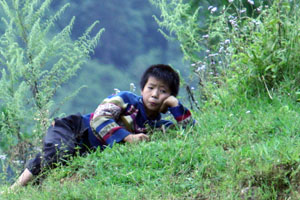 But, in general, rule number one is, get permission. It is essential that your behaviour and attitude is not one of right, but one of friendly coexistence. When you smile and nod while pointing at your camera, it is pretty clear what you want. This might sometimes mean that your photo will not be as spontaneous as you might wish, but at least you will not end up in sticky situations where the subject feels their personal space, or religion is violated. Especially on the topic of photographing children, you need to be very cautious, make sure to ask the parents or guardians for permission, no matter where in the world you are.
But, in general, rule number one is, get permission. It is essential that your behaviour and attitude is not one of right, but one of friendly coexistence. When you smile and nod while pointing at your camera, it is pretty clear what you want. This might sometimes mean that your photo will not be as spontaneous as you might wish, but at least you will not end up in sticky situations where the subject feels their personal space, or religion is violated. Especially on the topic of photographing children, you need to be very cautious, make sure to ask the parents or guardians for permission, no matter where in the world you are.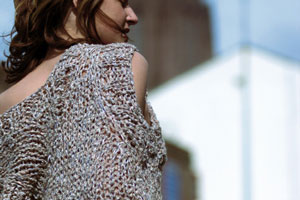 Rule number three is that if someone asks you to stop taking photos, either verbally, by turning away, by looking uncomfortable, or by running for cover, as happened to me in Vietnam, stop. No matter the reason why someone might want you to stop, it is important that you keep in mind what Darren Rowse
Rule number three is that if someone asks you to stop taking photos, either verbally, by turning away, by looking uncomfortable, or by running for cover, as happened to me in Vietnam, stop. No matter the reason why someone might want you to stop, it is important that you keep in mind what Darren Rowse 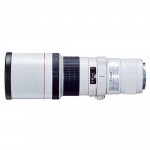
 Are you looking for the perfect Christmas gift for that special photographer in your life? If so, you’ve come to the right place. I know from personal experience that present shopping for photography-obsessed people can be tough.
Are you looking for the perfect Christmas gift for that special photographer in your life? If so, you’ve come to the right place. I know from personal experience that present shopping for photography-obsessed people can be tough.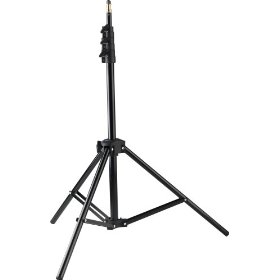 Looking for an inexpensive photography related gift? I won’t lie; sometimes it can be tough to find a good photography gift in this price range, especially with everyone switching to digital.
Looking for an inexpensive photography related gift? I won’t lie; sometimes it can be tough to find a good photography gift in this price range, especially with everyone switching to digital.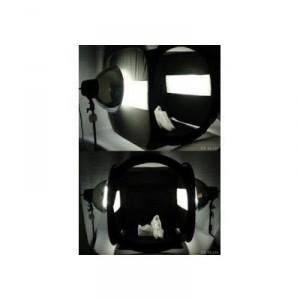 In this range, I’d recommend the
In this range, I’d recommend the  Once you get into this price range its possible to start looking at some decent tripods and lenses. However, before you go out and buy a tripod for your photographer friend, be warned that both tripods and lenses can be very personal things for some photographers.
Once you get into this price range its possible to start looking at some decent tripods and lenses. However, before you go out and buy a tripod for your photographer friend, be warned that both tripods and lenses can be very personal things for some photographers.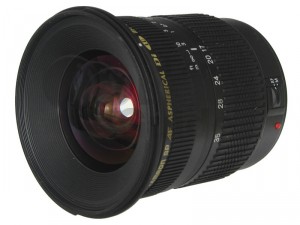 Alright, now we’re talkin’. In this price range, you can really find some quality lenses.
Alright, now we’re talkin’. In this price range, you can really find some quality lenses.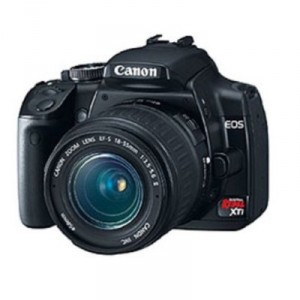 Bestower of Christmas joy…
Bestower of Christmas joy…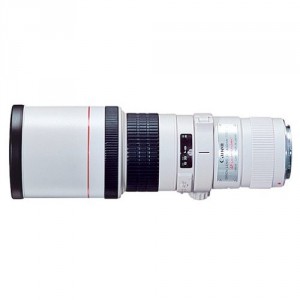 Now that you’re ready to start pulling out the big bucks, you’ve got a very important choice to make.
Now that you’re ready to start pulling out the big bucks, you’ve got a very important choice to make. If you are really willing to go all out this Christmas (and I mean really all out), then consider buying a medium format digital camera from Hasselblad. We’re talking about the high end of the high end here.
If you are really willing to go all out this Christmas (and I mean really all out), then consider buying a medium format digital camera from Hasselblad. We’re talking about the high end of the high end here. 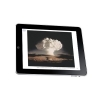
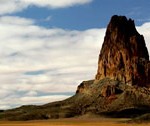
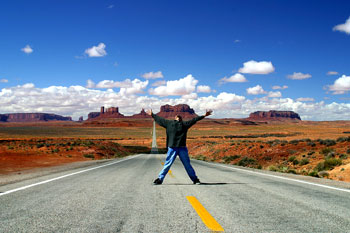 The human senses have an absolutely incredible dynamic range – think about it: when you’re inside a concert venue at a rock gig, you can hear every note and enjoy every instrument.
The human senses have an absolutely incredible dynamic range – think about it: when you’re inside a concert venue at a rock gig, you can hear every note and enjoy every instrument.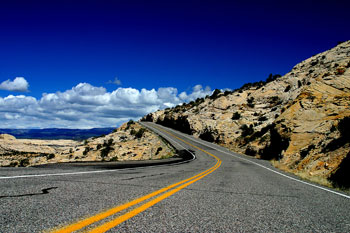 A couple of years ago, I believe when I got the then-brand-new-on-the-market Canon EOS 20D, I decided to switch to RAW. I spotted that the quality was better than with JPEG, and I stuck with it. Mostly, I did it because I could never quite get the
A couple of years ago, I believe when I got the then-brand-new-on-the-market Canon EOS 20D, I decided to switch to RAW. I spotted that the quality was better than with JPEG, and I stuck with it. Mostly, I did it because I could never quite get the 